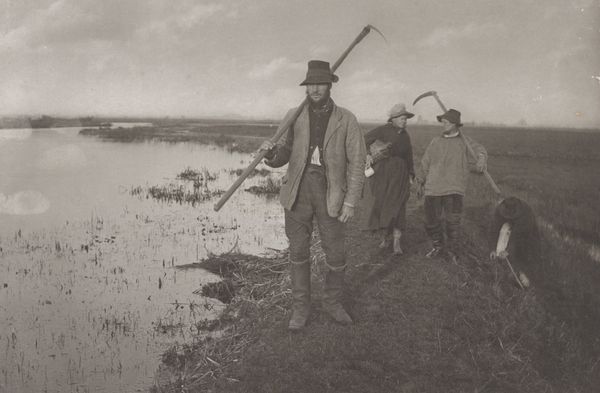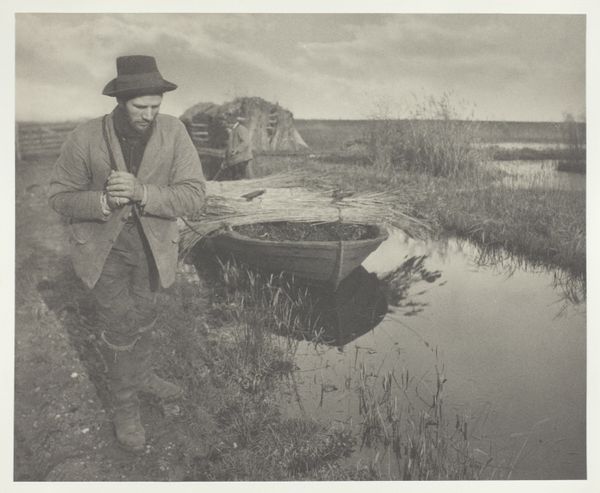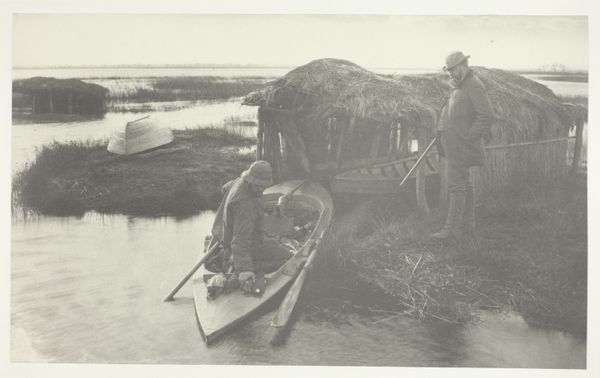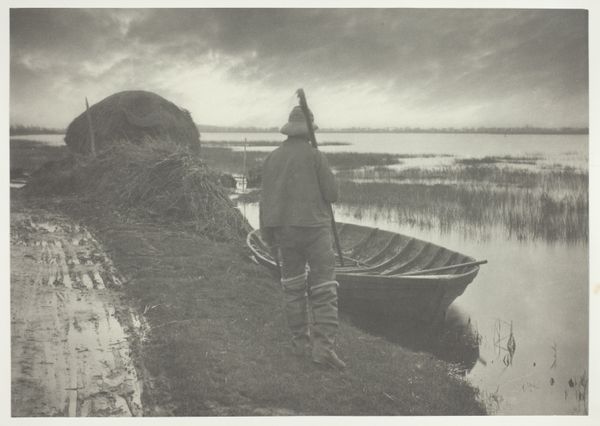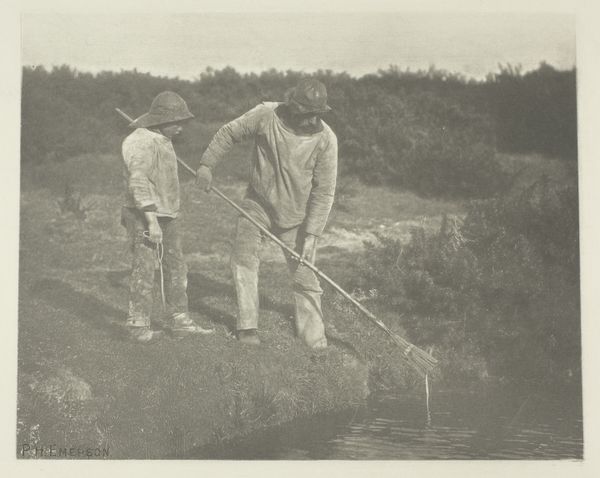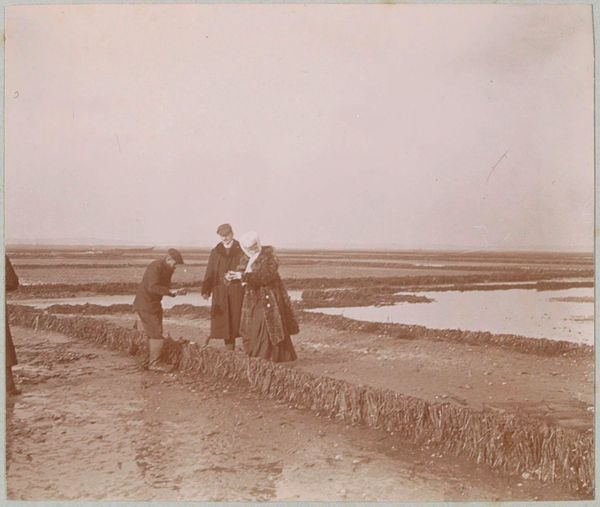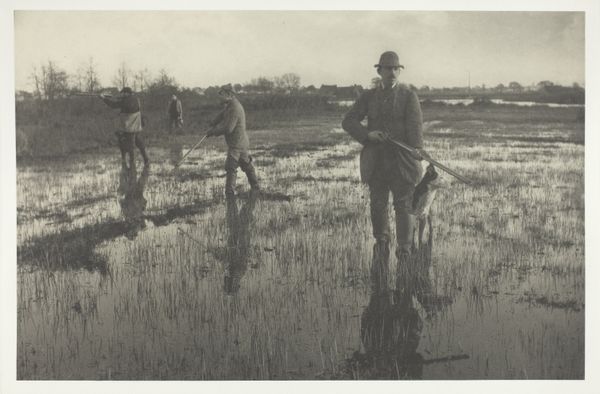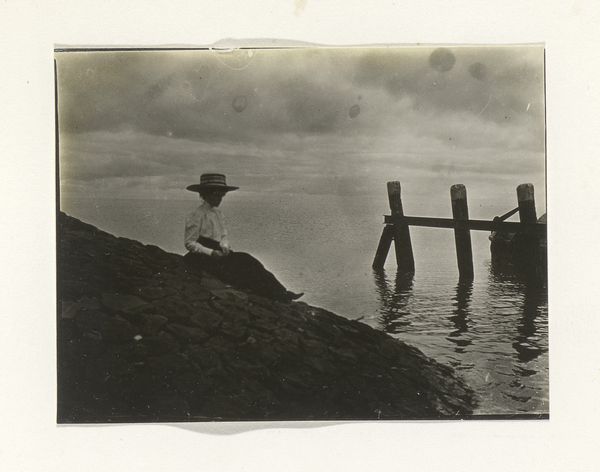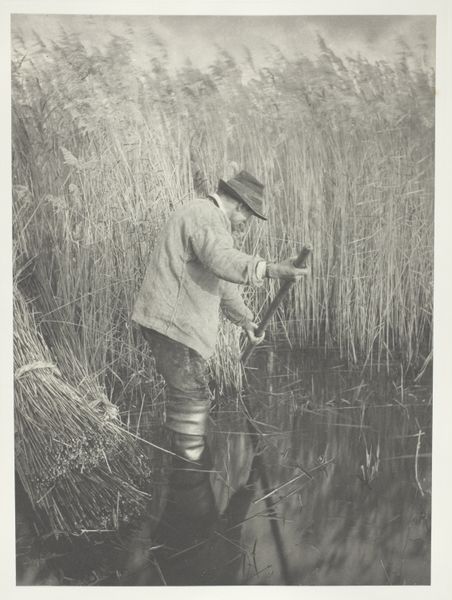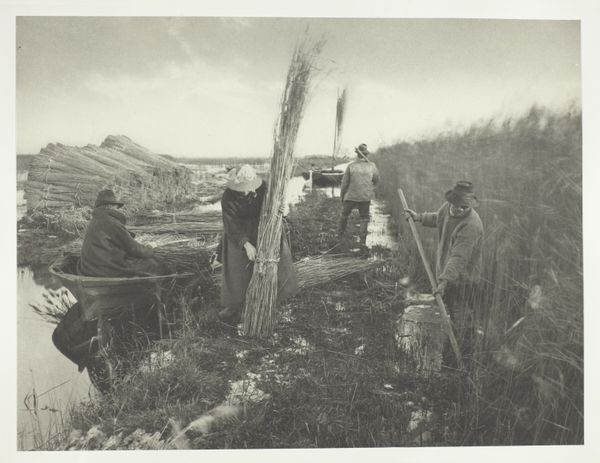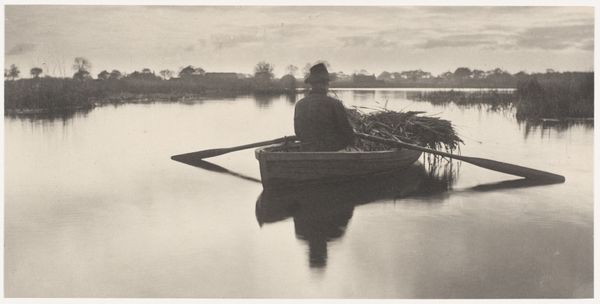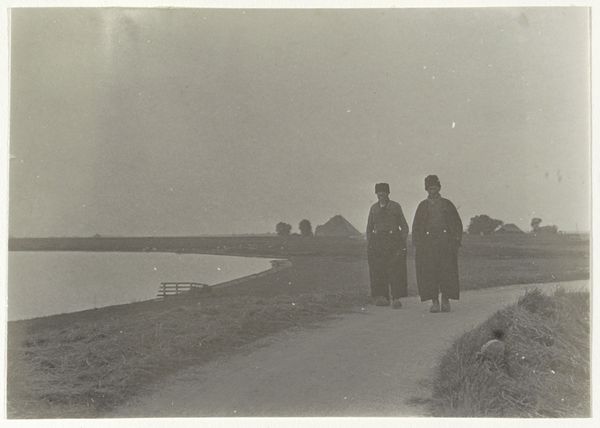
print, plein-air, photography, gelatin-silver-print
#
print photography
#
16_19th-century
# print
#
impressionism
#
plein-air
#
landscape
#
figuration
#
photography
#
gelatin-silver-print
#
genre-painting
#
realism
Dimensions: 19.6 × 29.2 cm (image/paper); 28.5 × 40.6 cm (album page)
Copyright: Public Domain
Curator: Peter Henry Emerson created this gelatin silver print, “Coming Home from the Marshes,” in 1886. It's currently housed at the Art Institute of Chicago. Editor: Wow, it feels like a memory half-faded. The figures emerge slowly, and it evokes that sense of being weighed down by the day, right? That stillness, like time slows after hard work. Curator: Absolutely. Emerson, known for his Pictorialist photography, sought to capture authentic rural life. Considering its historical context, it reflects a late 19th-century Britain grappling with industrialization and romanticizing agrarian ideals. We need to think about this idealization alongside labor exploitation. Editor: It totally makes sense that it's Pictorialist – it feels almost like a painting, not just a photograph. Those soft, muted tones and how the edges sort of blur? Like he's more interested in the feeling of the marsh than crisp details. Curator: Precisely! Emerson actually advocated for photography as an art form. His "naturalistic photography" aimed to mimic human vision, emphasizing selective focus to guide the viewer's eye, and it challenged the sharp-focus style prevalent then. Editor: It's so effective, you can practically smell the marsh air, damp earth, the weariness. The figures, especially the lead one carrying that long scythe, are really carrying the weight of that day. Curator: The figures’ poses and tools become critical in discussing labor practices. Who had access to land ownership, leisure, or representation outside the rural setting, right? These visual signifiers speak volumes about economic and social divisions. Editor: It does leave me wondering about their lives. Did they find beauty in that landscape? Or was it just a cycle of hard work? Because I am drawn to that quiet, melancholy mood, despite the tough reality it represents. Curator: It is a fine line. We mustn’t only see romanticism; there’s a socioeconomic commentary here. The image pushes viewers to consider the intersections of class, labor, and the idealized vs. the reality of rural life. Editor: It makes me want to go wander in a field now, and be mindful of the labor connected to our spaces and simple freedoms. So thought-provoking and calming, a lovely paradox.
Comments
No comments
Be the first to comment and join the conversation on the ultimate creative platform.
